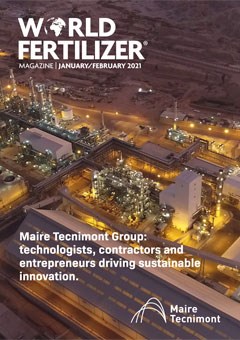Editorial comment
After finally closing the book on what can only be described as a disastrous 2020, things are looking simultaneously brighter and darker in the light of the new year. While the approval of a vaccine in many countries is bringing hope, here in the UK we are deep into a third lockdown, with no discernible ending.
Register for free »
Get started now for absolutely FREE, no credit card required.
In order to lift my spirits, and preserve my mental health in these taxing times, I have decided to set myself positive attainable goals when making my New Year’s resolutions for 2021. In 2020, my sole resolution was to travel more. But no sooner had I booked my flights, to destinations including Costa Rica, Bali, and Singapore, did I find myself grounded firmly in the UK. Therefore, this year, it was important to make my goals much less focused on grandiose adventures, but rather dedicate my time to things that will have a positive effect on myself and (hopefully) the world around me. On a personal level, my goals include drinking 2 l of water a day, and attending a yoga class once a week (currently virtually, hopefully in person by the end of the year). But on a more humanitarian note, I challenged myself this year to take part in Veganuary, as an effort to reduce my carbon footprint.
Many in the fertilizer industry, too, are looking at their environmental footprint and exploring greener solutions this New Year. In January 2021, two of the world’s largest fertilizer producers, CF Industries Holdings and Yara International, announced they are planning to reconfigure their ammonia plants in the US and Norway, in order to produce clean energy to power ships.
One of the top contributors to greenhouse gas emission is the consumption of oil for transportation. Marine fuels, in particular, are under scrutiny, with the IMO Sulphur 2020 standard having been put in place on sulfur dioxide emissions only last year. Therefore, fertilizer producers are now looking to join the growing list of companies cashing in on creating a low-emission solution.
By altering the production process of ammonia, normally used for fertilizer, companies are able to either produce pure hydrogen, or create a carbon-free, green ammonia as a hydrogen carrier, to be used as a marine fuel.
Due to the abundance of nitrogen available as a natural resource, green ammonia could be a viable solution to the marine fuel conundrum, though currently its high production costs and insufficient prices are being seen as an obstacle to some producers.
While the future of marine fuels, travel plans, and 2021 as whole remain uncertain, one thing you can always rely on is the team at World Fertilizer. Although we are still navigating the nuances of working from home full time, we would like to assure our readers that we will continue to offer a range of innovative opportunities to keep the industry up-to-date with the latest developments from the fertilizer industry. As always, be sure to follow us on Twitter, LinkedIn and Facebook, and keep your eyes peeled for some exciting announcements coming throughout 2021.


